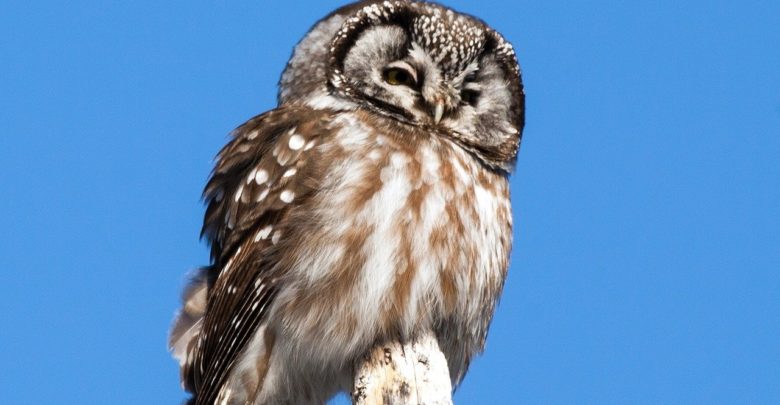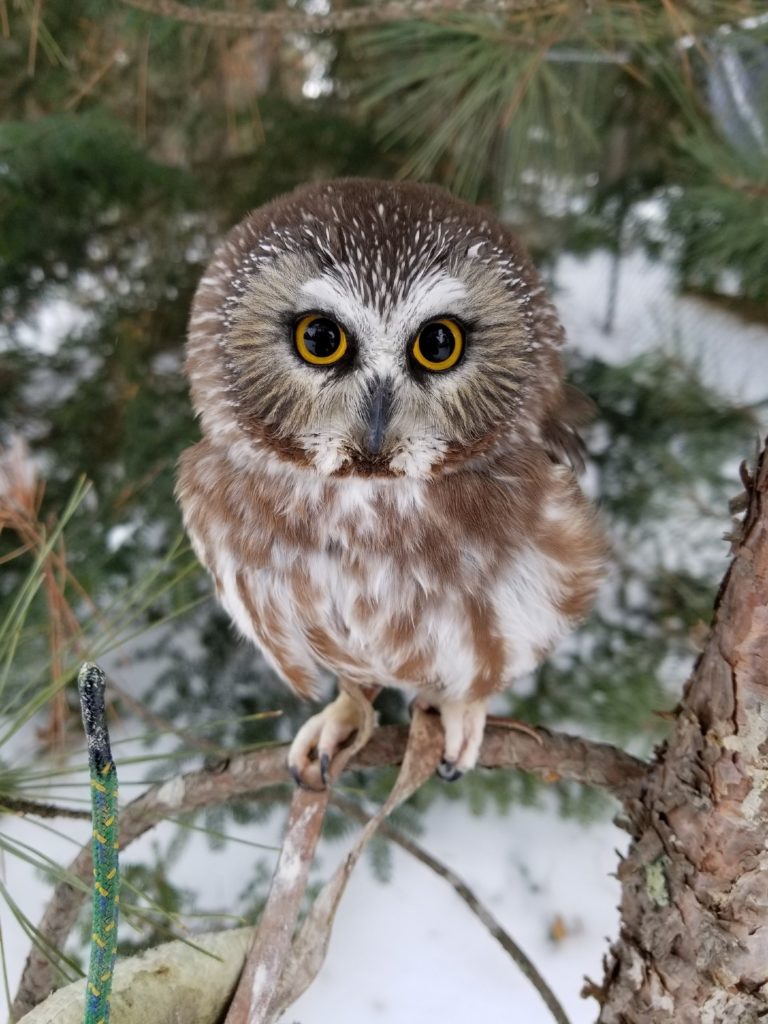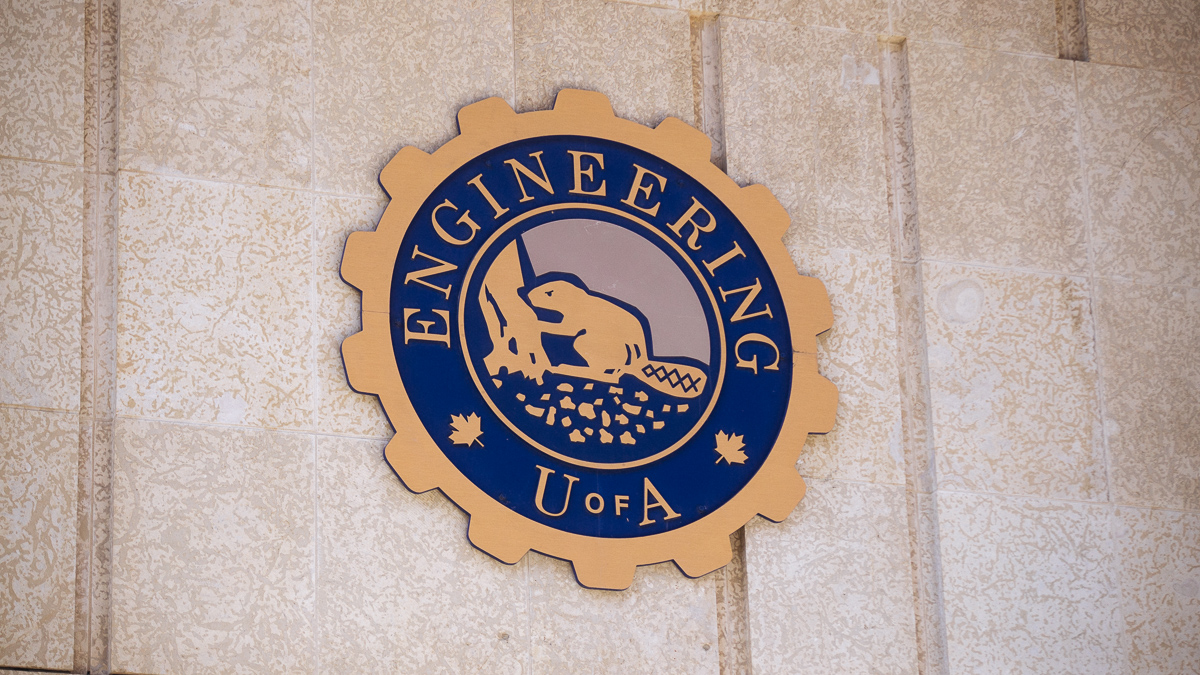 Supplied
SuppliedA University of Alberta study may help protect two elusive cavity-nesting owls species in the North American Boreal Forest by tracking their habits.
The study used recordings of Northern Saw-Whet and Boreal Owl calls at 677 sites in Canada’s Boreal Forest to research their distribution and how it is affected by climate, land cover, and human disturbance. The two subjects are both small owls nesting in pre-existing cavities in trees, yet the results show the Northern Saw-Whet Owl is attracted to linear features such as cropland, while the Boreal Owl is repelled.
Zoltán Domahidi is a two-time alumnus from the U of A, graduating with a bachelor of science in environmental and conservation sciences in 2014, and a master of science in conservation biology in 2018. This research paper was part of his master’s thesis, with the idea growing while he was working with the Ecosystem Management Emulating Natural Disturbance (EMEND) Project, a U of A lab near Peace River that researches forest ecosystems and sustainability.
Domahidi was working as part of EMEND’s main research group when he started to wonder how forest harvesting may be impacting boreal forest’s cavity-nesting owls.
“We are changing the forest so much,” Domahidi pointed out. “But nobody really studies these owls because it’s so remote. It’s very expensive to do studies in the north, and I said ‘Well, why don’t I do it?’”
Domahidi put up nest boxes around the EMEND research station. Nest boxes are small wooden boxes with a cover and entrance hole, designed for cavity-nesting owls to nest in. The data collected from these next boxes was used to write a second chapter of Domahidi’s thesis in September 2020 (published in Canadian Field Naturalists), about preferred forest types and amount of young raised by Boreal and Northern Saw-Whet Owls on a local scale.
The main part of Domahidi’s thesis was published in 2019 in Avian Conservation & Ecology. He used remote sensing and Geographic Information System (GIS) mapping — two methods of data mapping that can be done using high-flying aircrafts and pre-existing maps of the vast boreal forest — to analyze human disturbance, land cover, and climate. Previous and new auditory recordings for the two cavity-nesting owls were also obtained, with the goal being to find ways to predict the distribution of Boreal Owls and Northern Saw-Whet Owls.
The results of Domahidi’s study found Boreal Owls prioritize areas with cold winters, while Northern Saw-Whet Owls care most for local crop cover and low precipitation.
The two species are found to have opposite reactions to what the team describes as linear features such as roads and pipelines. Boreal Owls avoid the areas, whereas Northern Saw-Whet Owls appear to be positively influenced by them.
“Boreal owls are less tolerant to disturbance, it seems, and they need specifically conifer areas,” he explained. “While Northern Saw-Whet Owls are more adaptable, more versatile.”

Prior to this study, almost nothing was known about owls in North America’s boreal forest. In fact, Donahidi explained how not much was known about these two owl species in general, or “small fluff balls with big eyes,” as he playfully described them.
“Very, very little, if any, studies have been done in the North American Boreal Forest with owls,” he said. “Everything we assume is based on things people did in Finland, somewhere else in Europe, or at high-elevation forest in the US.”
When Domahidi noticed how quickly the boreal forest is changing due to factors such as climate change, logging, and fires, his mind immediately turned to the Boreal and Northern Saw-Whet Owls and how they must be coping.
Domahidi explained that cavity-nesters have particularly high competition; many animal species nest in cavities, and studies have shown that the woodpeckers depended upon to excavate these cavities drill less holes when the forest is disturbed.
“I was focusing on these two owls because these are cavity-nesting owls,” Domahidi reasoned. “They need not just the old forest, but they need the cavities in the forest.”
Now that the distribution of these birds can be somewhat predicted, it may protect the two owl species by influencing decisions such as where to build roads.
“Forestry companies have to make five to ten-year forest harvest plans,” Domahidi pointed out. “In responsible forestry, they should take into account the presence of animals as well — not just taking the lumber out.”
As well as being used in predictive modelling for forestry companies, Domahidi also mentioned how his research may help if conservation areas are ever created in the boreal forest.
“If the goal is to preserve these two owls or try to help them, then you could incorporate areas that would be most likely occupied by these owls,” he said.
The recent publication of the second chapter of his thesis has inspired Domahidi to return to EMEND and to potentially begin long-term monitoring of the Boreal and Northern Saw-Whet Owls. He may even start a non-profit organization centred around conservation and research at some stage – just as he did in Romania at the age of 16.
For current students hoping to end up in a similar field, Domahidi recommends they speak to an academic advisor, look for summer jobs with the university, contact researchers directly, and “dream big!”
“Sometimes people like to just continue projects that already exist and they like to develop projects,” Domahidi said. “But if you have a specific project in mind that you really want to do, and you want to put in lots of energy, then just find the right person and talk to them.”




